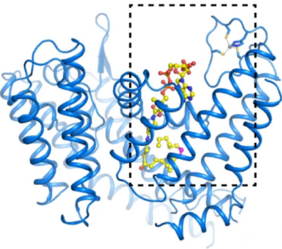Many of our body's functions are based on the transmission of signals from one body cell to the next. Signals are also transmitted within cells via various signalling pathways. Signal transmission is based on the precisely coordinated interaction of different molecules - this is how communication and the control of processes in our body take place at the molecular level. Important biological processes that are essentially regulated by signal transduction are, for example, immune reactions, olfactory perception, light perception, and muscle contraction.
An important signal transmission pathway is the so-called Wnt signalling: it is one of the most important signalling cascades for embryonic development and stem cell maintenance. Wnt signalling also controls tissue regeneration in the adult bone marrow, skin, and gut. And disturbances in Wnt signalling are often associated with cancer.
As recently published in Nature, an international team of researchers has now been able to elucidate the functioning and inhibition of a specific Wnt signalling pathway, namely that mediated by the enzyme PORCN, at the molecular level using cryo-electron microscopy. UniSysCat researcher Nadia Elghobashi Meinhardt carried out the molecular dynamics simulations required to interpret the cryo-electron microscopy images.
Wnt signalling is triggered by the binding of the signalling protein Wnt to its receptor, the so-called Frizzled receptor. Structural studies have shown that a certain structural modification of the Wnt protein, namely the attachment of a lipid, is essential for it to recognize its receptor. This lipid attachment is catalyzed by the enzyme PORCN. A disruption of the lipid attachment site (acylation site) on the Wnt protein abolishes the Wnt signal. Moreover, some small-molecule inhibitors have been found which can de-activate the PORCN enzyme, thus also abolishing the Wnt signalling. In relation to cancer, these findings are very interesting: This inhibition can substantially reduce the size of Wnt-dependent tumors – a promising indication of therapeutic options using small-molecule inhibitors as drugs.
However, the functionality of the PORCN mediated Wnt acylation as well as its inhibition have not yet been understood. In their current study, the research team reports cryo-electron microscopy structures of four different complexes of PORCN by which they could explain the molecular mechanism of PORCN-mediated Wnt acylation and provide insights into the development of small-molecule anti-cancer drugs.
This study has been published in Nature: Y. Liu, X. Qi, L. Donnelly, N. Elghobashi-Meinhardt, T. Long, R. W. Zhou, Y. Sun, B. Wang & X. Li, Mechanisms and inhibition of Porcupine-mediated Wnt acylation. Nature 607, 816–822 (2022). https://doi.org/10.1038/s41586-022-04952-2



